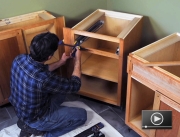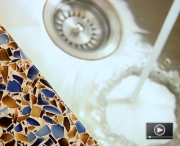Sustainable Countertops
For years, design shows have been busy emptying the world’s quarries of as much granite as possible in the name of kitchen countertops. The harvesting of stone, as well as its shipping and processing, can leave a significant environmental footprint. A small number of companies, such as Cold Spring Granite (which has architectural, memorial, and residential products), prioritize sustainability. Meanwhile, green manufacturers have been coming up with a number of attractive and highly functional alternatives.


